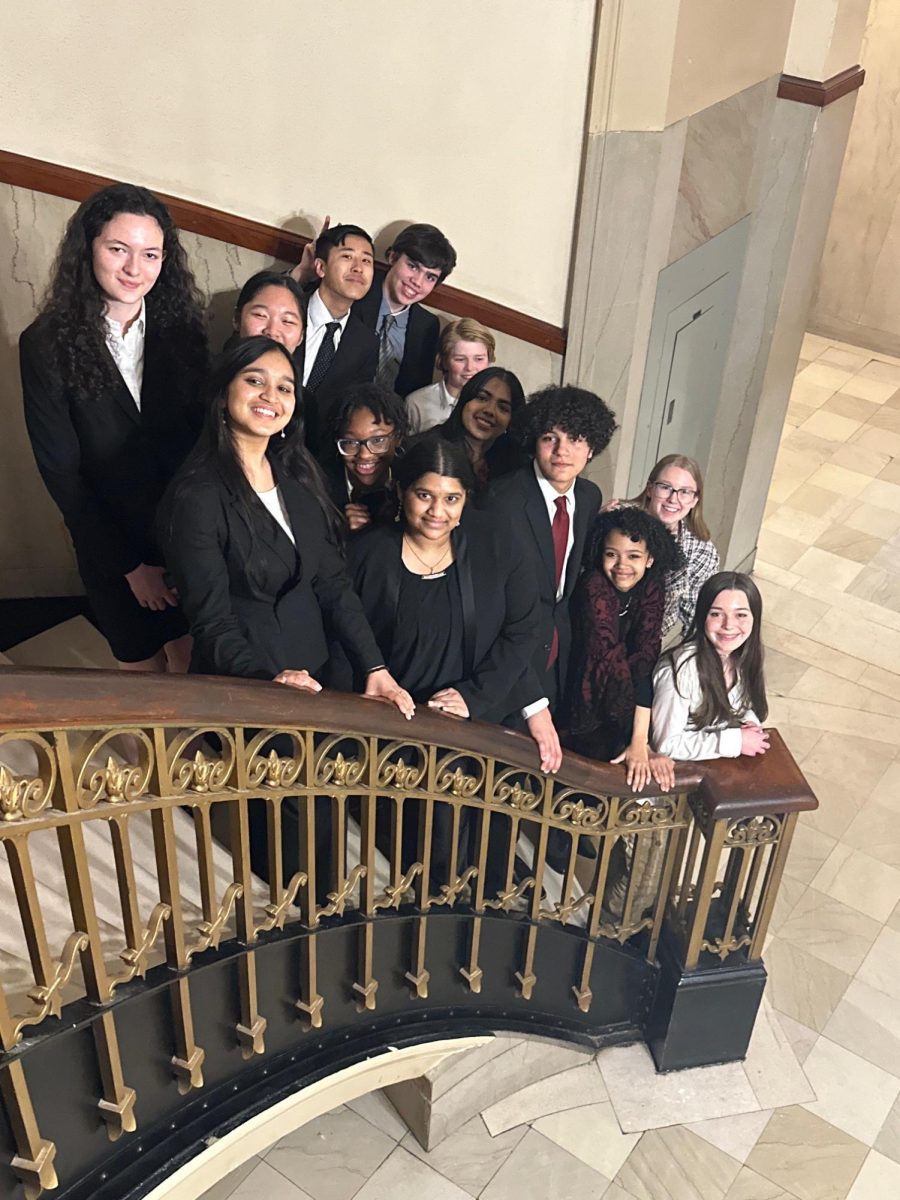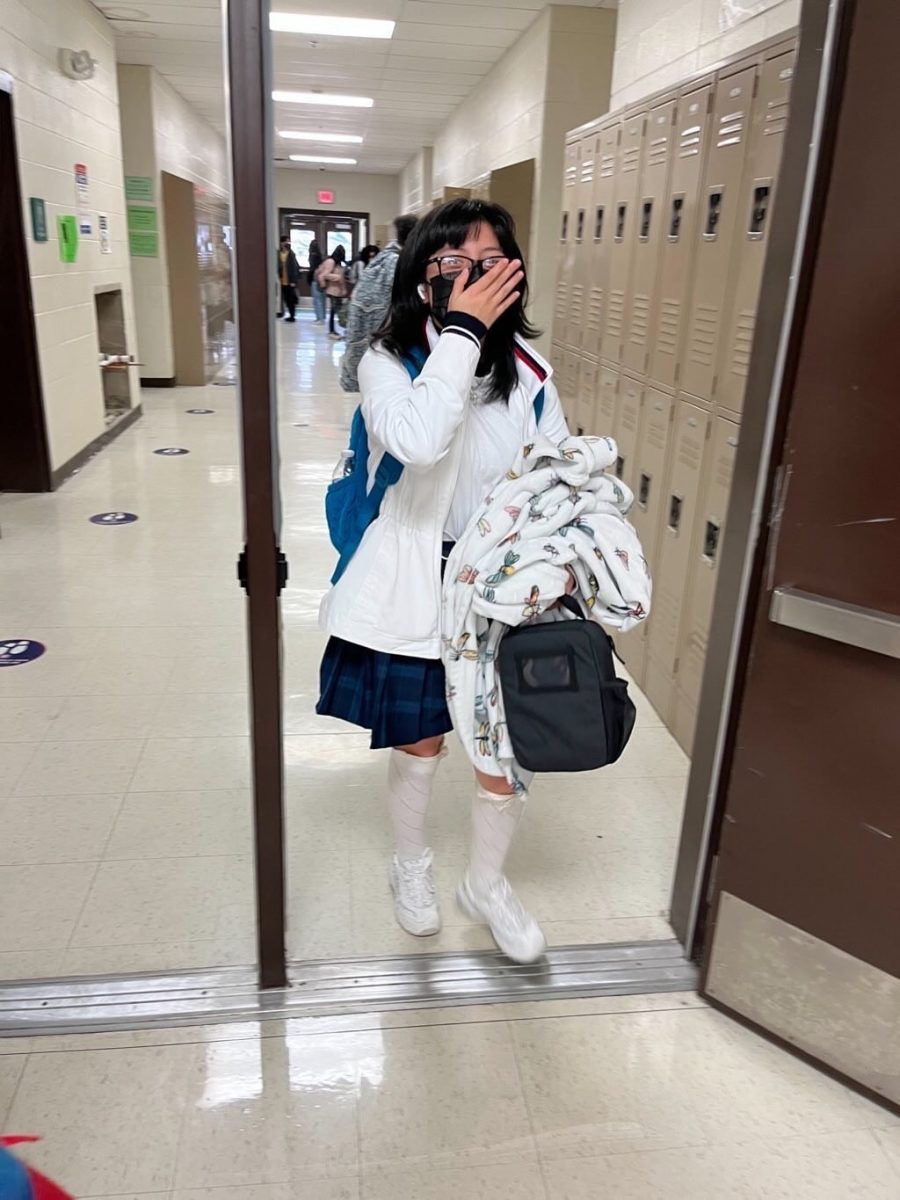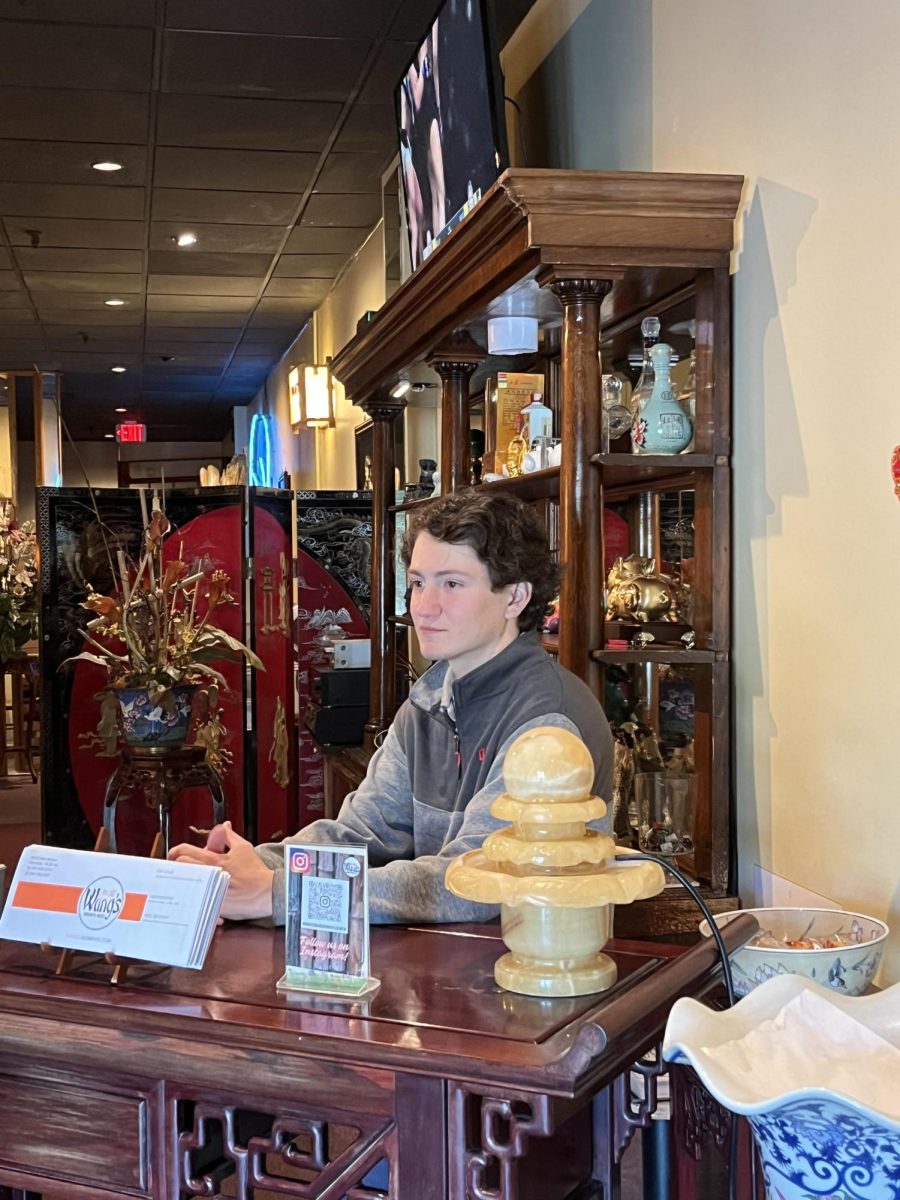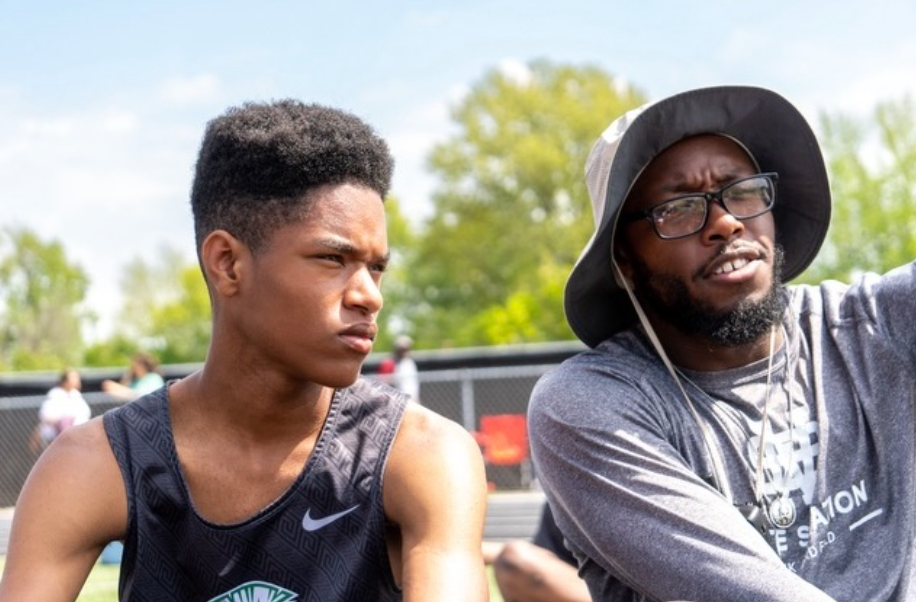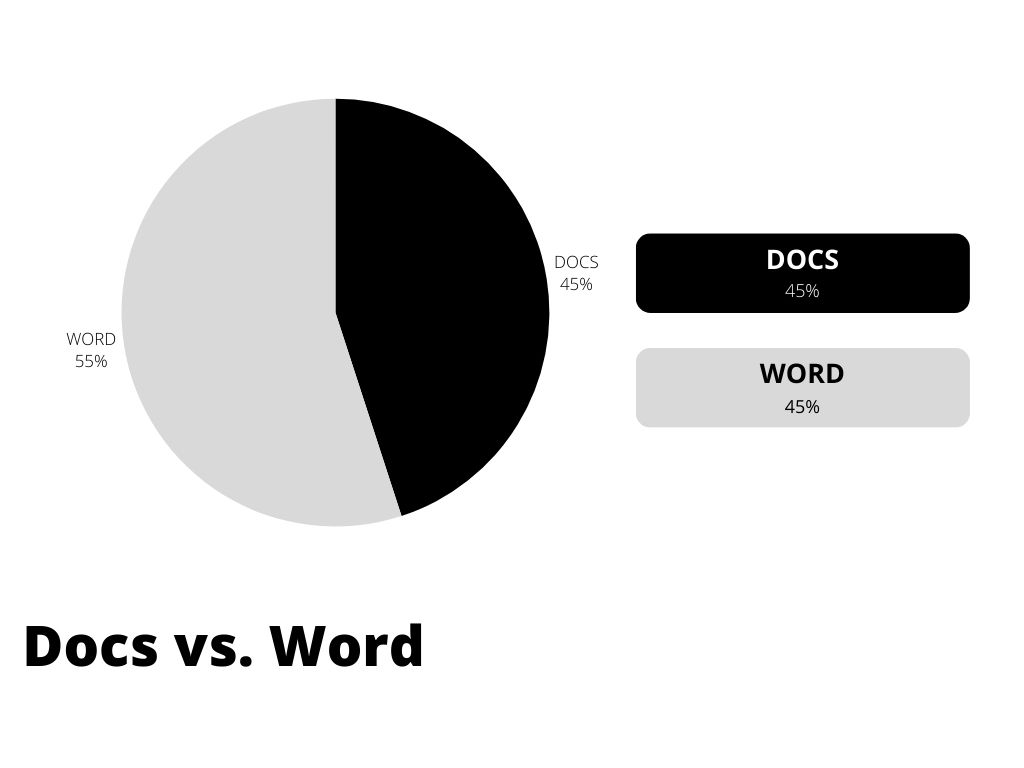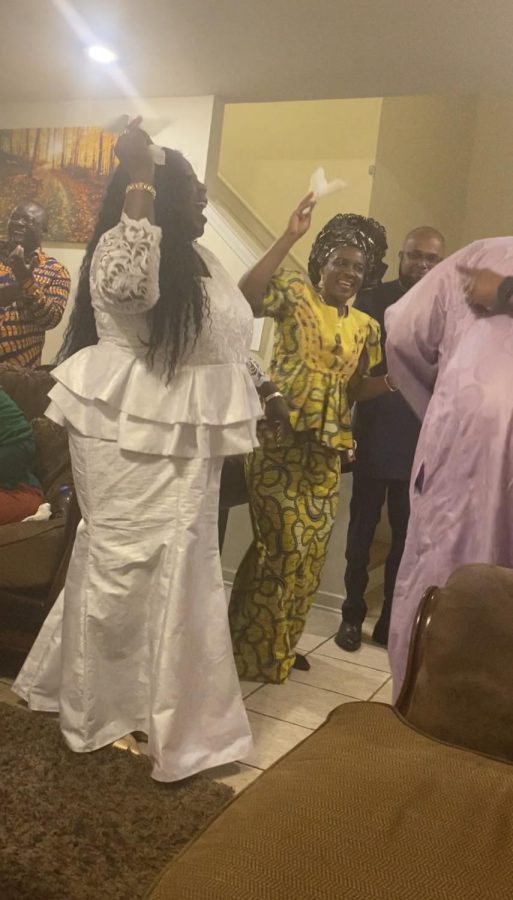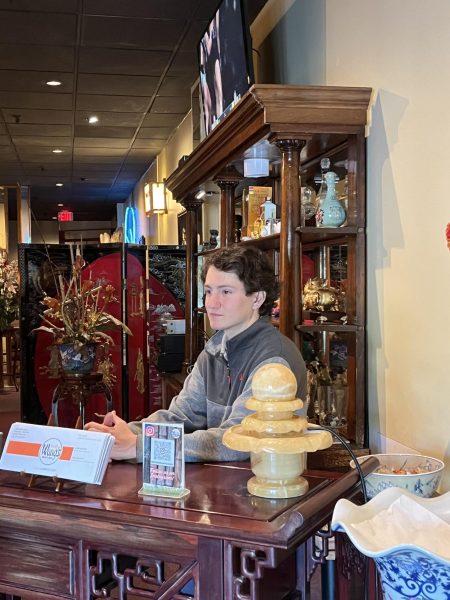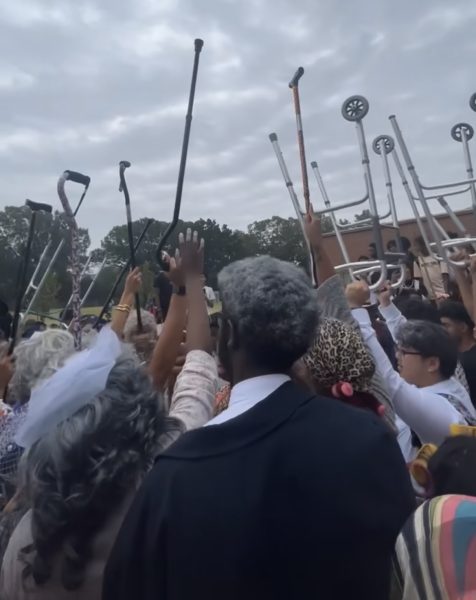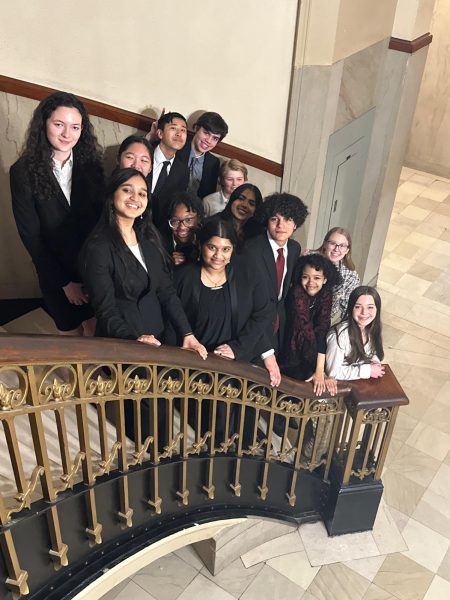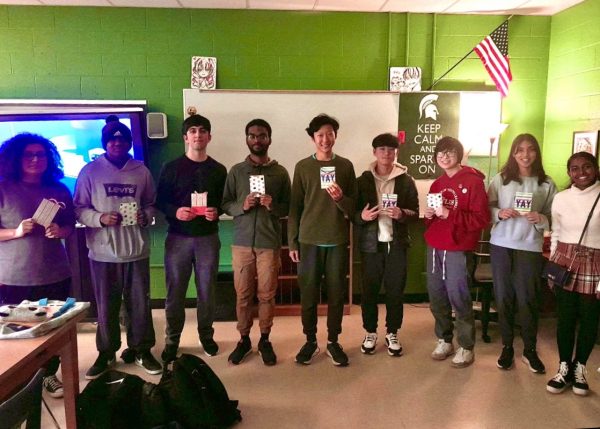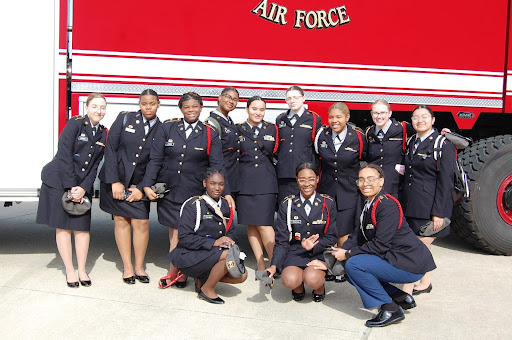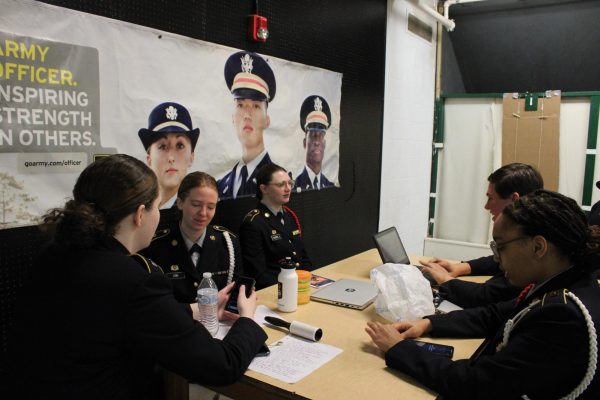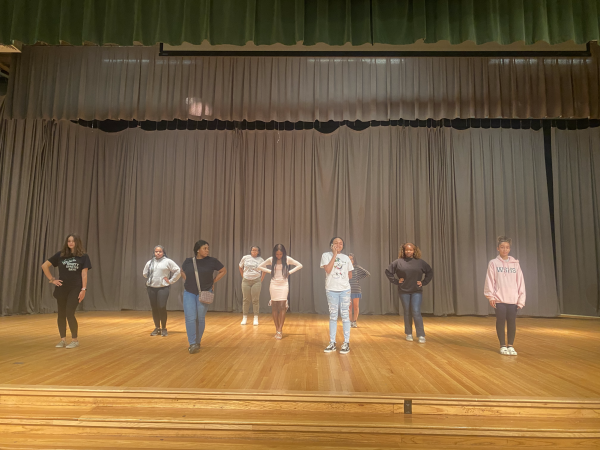Connecting with culture during New Year’s
N’KOUMITCHA TASSA//USED WITH PERMISSION
Friends and family of French and English teacher N’Koumitcha Tassa dance on Jan. 1 to ring in the New Year. The group danced a traditional dance of Togo.
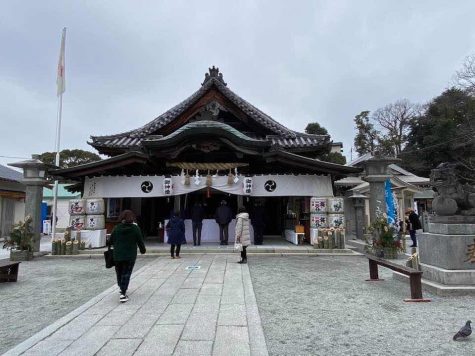
All around the world, people ring in the New Year at midnight on Jan. 1. While shooting fireworks is one of the most common traditions, there are many other unique ways that people commemorate the old year and celebrate the new.
Anastasia Kirilova (11)
UKRAINE
Kirilova has snowy memories of New Years past in the city centers of Ukraine.
While she recently moved to Memphis, Kirilova still partakes in traditional New Year’s customs by having a midnight feast — though it is not exactly the same as back home.
“We cook all these things during the 31 of December, and we start to eat at 12 a.m., no earlier,” Kirilova said. “And we sit with each other and eat food up to five to six a.m. The city centers are full as well. It is full with food, people and fireworks.”
Some of the traditional foods Kirilova eats include meat salad, crab stick salad and golusbi — a cabbage roll filled with meat and rice. The evening after New Year’s, friends and family come together again to eat the “leftovers from last year.”
“It is important to be with your family and people who you love,” Kirilova said.
Aylla Wexler (9)
JAPAN
Having two cultures has allowed Aylla Wexler (9) to experience two unique ways of celebrating New Year’s. Wexler’s mom, who was born in Japan, helps her stay in touch with her Japanese side.
“On New Year’s, we eat Japanese food which sometimes varies,” Wexler said. “This year for 2023, we had a simple soup called おぞうに, or Ozouni, [which is] traditional for the celebration and had hotpot.”
Since Wexler does not have any Japanese family in the U.S., she calls her grandparents for their New Year’s countdown in Japan and then again for her own in the states.
“Being mixed means I celebrate with my American family, but I also need to be reminded that I should honor my other culture as well,” Wexler said. “Someday, I hope to visit my family during the winter, just to experience the fully authentic celebration rather than imagining it. Practicing Japanese traditions is very special to me, and I will continue to cherish it.”
Shana Hong (11)
SOUTH KOREA
For Shana Hong (11), New Year’s Day can be a very lucrative time. For example, she made around $300 this year.
“[A] tradition we have is 세배 (sebae), where younger people bow down to the elders, saying ‘새해 복 많이 받으세요,’ which means, ‘Have lots of good luck this year,’” Hong said. “Then, the adults would tell the kids words of wisdom for the year and give them money.”
While sebae is Hong’s favorite tradition, other traditions she participates in include eating rice cake soup called 떡국 (ddukguk), which brings good luck and adds another year to one’s current age and playing a traditional board game called 윷놀이 (yutnori).
“[Sebae] is important to me because not only do I earn a lot of money, but I also earn valuable advice from the adults about life,” Hong said.
Martha Tufer (11)
ETHIOPIA
After fasting for around two and half months, Martha Tufer’s (11) early January celebrations begin. Tufer, who is Ethiopian and an Orthodox Christian, celebrates on Jan. 7.
“We stay overnight at our church,” Tufer said. “We wear a dress for women – it’s called a habesha dress, and … the priest tells us about our new year and stuff like that, and we leave the next day in the morning and when we do that, basically the next morning or overnight, we usually celebrate, and the children usually sing a couple of songs.”
Part of Tufer’s New Year’s traditional foods include kitfo, which is ground beef based, served with flatbread called injera.
“I love how everybody [comes] together and how kids sing,” Tufer said. “They’re really beautiful when they sing …and I really wish after I graduate and stuff like that … that I can go [back to Ethiopia] during the New Year.”
Sofia Ramirez (10)
VENEZUELA
In the past, Sofia Ramirez (10) celebrated New Year’s with numerous family members back home in Maracaibo, Venezuela. However, Ramirez now partakes in Venezuelan New Year’s traditions here in the states.
“On New Year’s at 12 a.m. [or] 11:58 p.m. we eat 12 grapes, and we make a wish for every grape, and it’s supposed to be like a wish for every new month in the new year,” Ramirez said. “So, we just — we kinda rush it. We eat them fast and sometimes we go outside with suitcases and we run and it attracts traveling throughout the year.”
In addition to these traditions, Ramirez also eats hallacas, which are a traditional Venezuelan tamale and pan de jamon, which is a ham bread. She also calls her family back home and listens to gaitas, which are traditional Venezuelan folk songs.
“I really like my culture and the way I grew up, so I would like to continue it throughout the years and when I have kids, like teach them the traditions, so that it’ll keep going,” Ramirez said.
Diogo Trindade (11)
BRAZIL
Jumping over seven waves, each representing a wish, was something Diogo Trindade (11) did back in Brazil to celebrate New Year’s.
While he is in Memphis this year as an exchange student, he was still able to participate in other traditional New Year’s customs from back home.
“You wear a specific color that you want to have in your new year and the whole year,” Trindade said. “So, it’s like white for peace, I think it’s yellow for money, black for freedom and so … on.”
This year, Trindade wore white, a common color choice among Brazilians. Other traditions in Brazil include keeping a $100 bill in one’s wallet to attract more of these bills and not eating backwards-walking animals such as chickens to promote moving forward in the new year. Trindade’s favorite tradition, though, is the symbolism of the colors worn on New Year’s.
“You see a lot of people wearing different colors, not only white, so then you can understand what people want as well,” Trindade said. “It’s something [where] more people can understand your wishes and actually wish the best for you as well.”
N’koumitcha Tassa
TOGO
New Year’s is a time when French and English teacher N’koumitcha Tassa gets to connect with his friends from Togo.
Tassa’s only family in the U.S. is his wife, so he joins other Togolese families to celebrate the New Year.
“The New Year’s is a very important period of the year,” Tassa said. “We meet, we exchange gifts, we bid farewell to the previous year and then welcome the new year with prayers committing ourselves, our family [and] our loved ones in the care of our creator.”
Togolese families wear their finest clothes and eat traditional African foods such as fufu, a soup made with different meats, vegetables and often starches. Wishing the best for loved ones is another part of Tassa’s tradition as wishes for health, prosperity and stable families are made throughout the celebration.
“You are not who you are, if you don’t practice your culture,” Tassa said. “Whatever the case may be, whatever the situation might be. I can even have the American nationality. I cannot be American spiritually. I still need to fulfill my tradition. What my ancestors used to do, and then what I need to do in order to identify me, because that is who you are … and then when people try to be who they are not, it is difficult to define you.”
Your donation will support the student journalists of White Station High School. Your contribution will allow us to purchase equipment and cover our annual website hosting costs.

